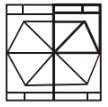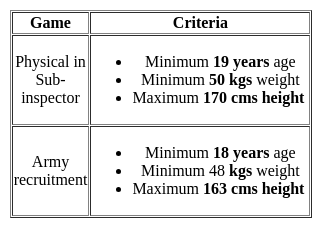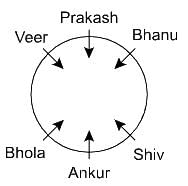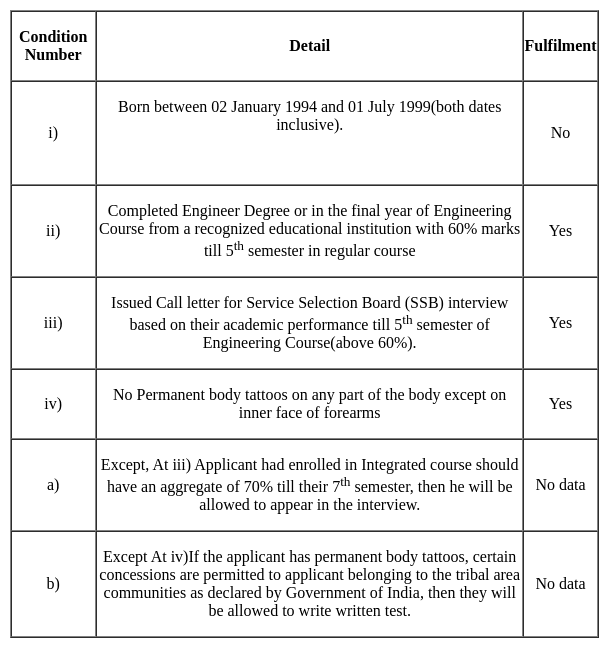HPCL Mechanical Engineer Mock Test - 1 - Mechanical Engineering MCQ
30 Questions MCQ Test - HPCL Mechanical Engineer Mock Test - 1
Direction: In the following question, the sentences have been given in Active/ Passive Voice. From the given alternatives, choose the one which best expresses the given sentence in Passive/ Active Voice.
The gardener ought to water the plants daily.
Direction: Choose the option closest in meaning to the OPPOSITE of the word given in capitals.
ENDOW
Direction: In the following question, the sentences have been given in Active/ Passive Voice. From the given alternatives, choose the one that best expresses the given sentence in Passive/ Active Voice.
Who wrote it?
The ratio of the length to the breadth of a rectangle is 5 : 4 and the area of the rectangle is 320 cm2, what is the perimeter of the rectangle?
In a year, the average monthly expenditure of Rajat in the first 5 months is Rs. 21,000, in the next 4 months is Rs. 24,000 and in the last three months is Rs. 12,000. If he saves overall Rs. 1,80,000 in the whole year, what is his average monthly income?
The quantity that a container holds is called its
Decimal representation of a rational number cannot be
Directions to Solve
In each word of the following questions consists of pair of words bearing a relationship among these, from amongst the alternatives, pick up the pair that best illustrate a similar relationship.
Question -
Rectangle : Pentagon
Direction: In each of the following questions a pair of capitalised words is followed by four pair of words. You are required to mark as the answer the pair of words which have a relationship between them most similar to the relationship between the capitalised pair.
Doubt : Faith
Which answer figure will complete the pattern in the question figure?

Six persons – Veer, Prakash, Bhola, Shiv, Ankur and Bhanu were sitting around a circular table facing towards the centre. Who was sitting to the immediate right of Bhanu?
Statement I: Ankur was sitting second to the right of Veer, who was sitting to the immediate left of Bhola. Prakash was sitting second to the left of Bhola.
Statement II: Shiv was sitting to the immediate right of Ankur, who was sitting second to the right of Veer. Prakash was sitting second to the left of Bhola, who is to the immediate left of Ankur.
Directions to Solve
In each of the following questions find out the alternative which will replace the question mark.
Question -
Cloth : Mill :: Newspaper : ?
Directions to Solve
Each of the following questions has a group. Find out which one of the given alternatives will be another member of the group or of that class.
Question -
Arid, Parched, Droughty
Manav born on 03 December 1999, is in final year of Engineering of a Regular Course, with an aggregate of 75% till his 5th semester, he has permanent body tattoo on his inner face of forearm.
Material removal rate in grinding operation is small due to
Rankine's formula is an empirical formula that is used for
Which of the following is the most widely used cutting tool material?
A long fin extends from the external surface of a cylinder through which hot fluid flows; the excess temperature at the tip of the fin would be
The intensity of solar radiation on earth is nearly Buy Today
Consider the following statement about D'Arsonval Movement
1. It is best suited for d.c. current measurement
2. It responds to the average value of current
3. It could be used for power measurements Which of these statements is/are correct
The young elasticity of a perfectly rigid body is-
An ideal spark ignition engine has a compression ratio of 9. What is its Air standard efficiency ifratio of specific heats is 1.5 ?
For large tonnage(more than 200 tons) air-conditioning applications, which one of the following types of compressors is recommended?
Which among the following is the hardest cutting tool material?




























